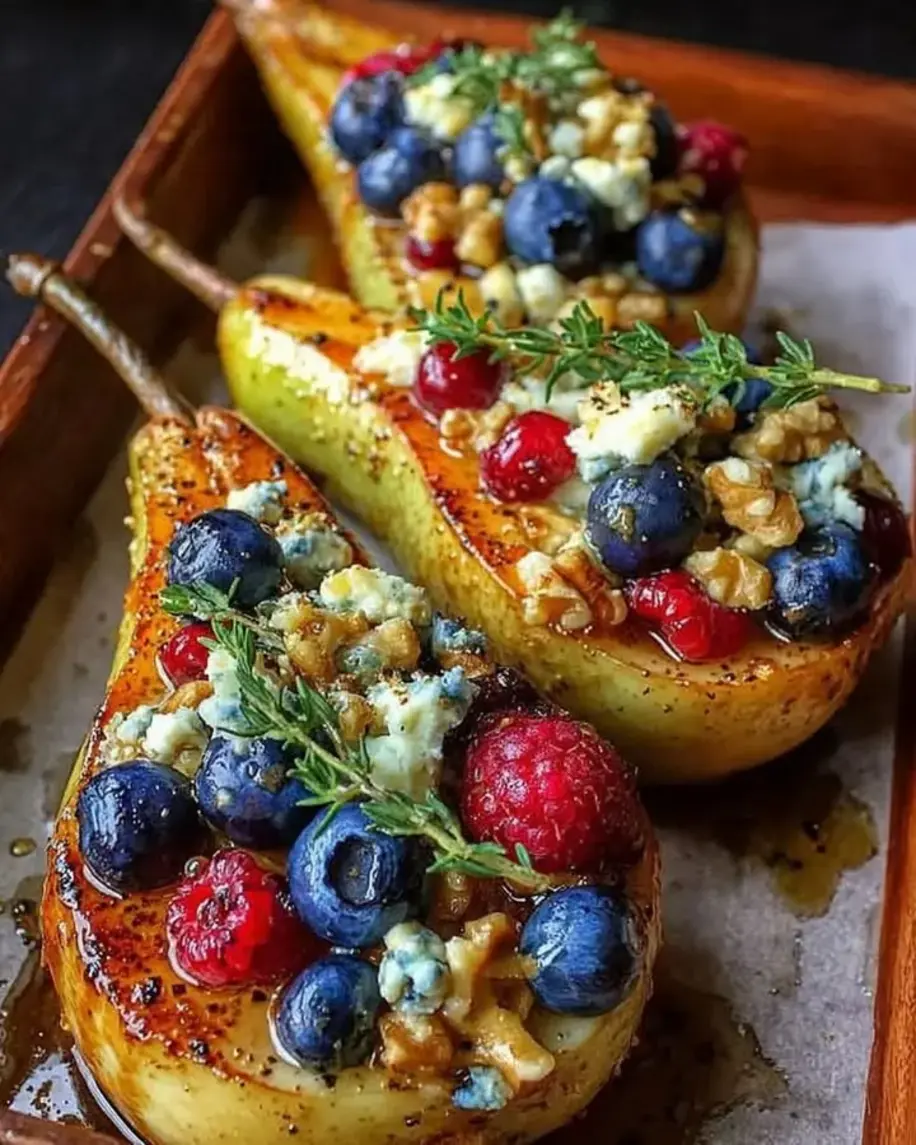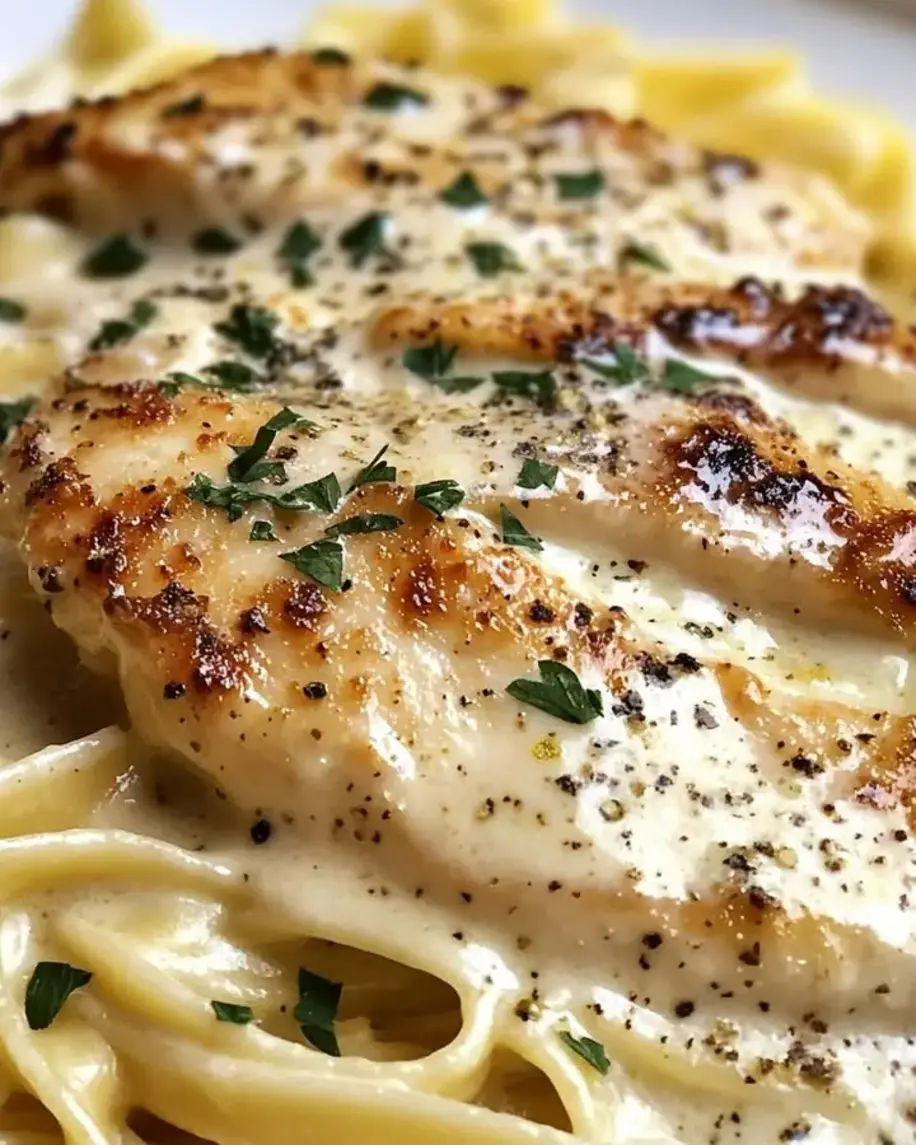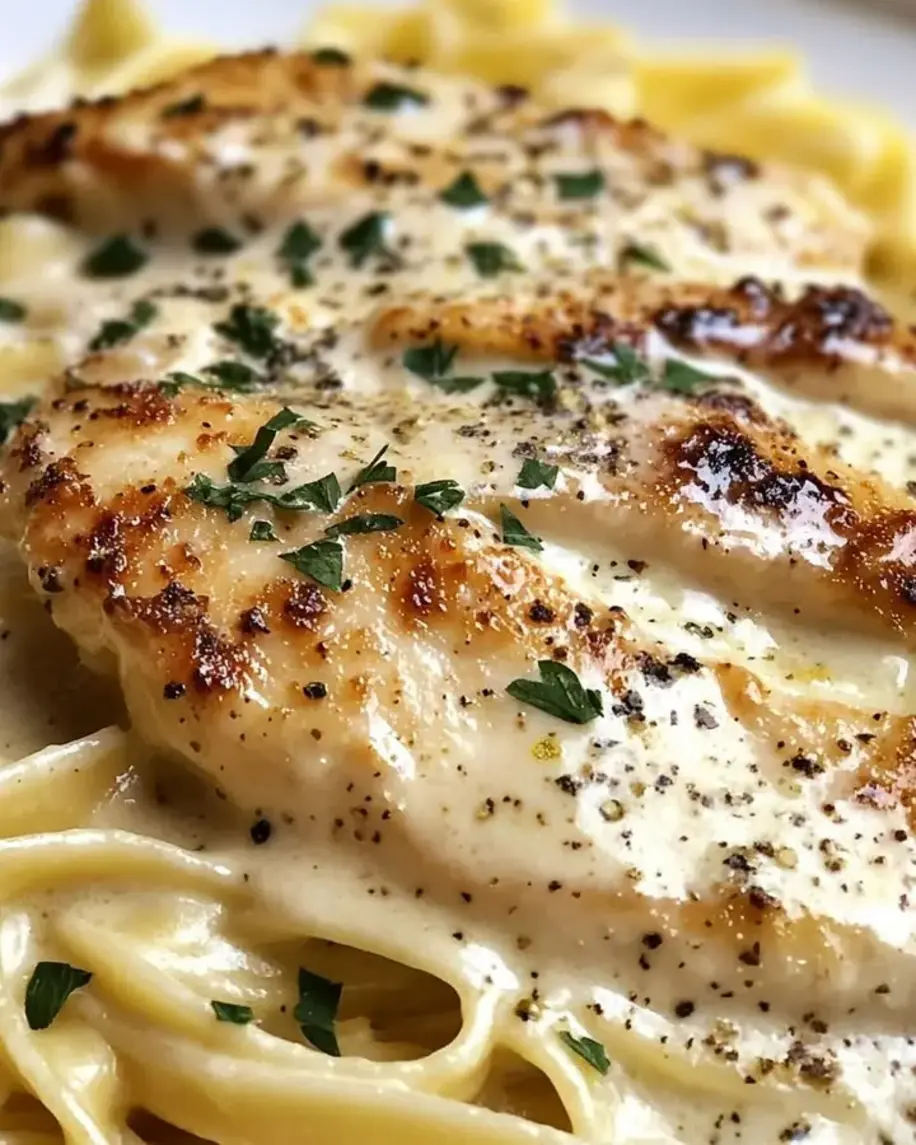“`html
Table of Contents
The Ultimate Caramelized Butternut Squash with Gorgonzola and Cranberry-Balsamic Glaze
Are you searching for a show-stopping side dish that elegantly balances sweet, savory, and tangy flavors? Look no further! This recipe for Caramelized Butternut Squash with Gorgonzola and Cranberry-Balsamic Glaze is precisely what your holiday table, or any dinner gathering, has been missing. Unlike ordinary roasted squash, our method delivers an unparalleled depth of flavor and a melt-in-your-mouth texture that will have your guests asking for seconds. We’re talking about perfectly tender, beautifully browned butternut squash cubes, generously studded with piquant gorgonzola cheese, and drizzled with a vibrant, homemade cranberry-balsamic glaze. It’s sophisticated enough for a festive feast yet remarkably simple to prepare.
Imagine: each bite is a delightful symphony. The inherent sweetness of the butternut squash is expertly intensified through caramelization, creating crispy edges and a tender interior. This sweetness is then beautifully contrasted by the sharp, creamy bite of gorgonzola cheese, offering a delightful tanginess that cuts through the rich flavors. Bringing it all together is the star of the show – a luscious cranberry-balsamic glaze. The tartness of the cranberries melds with the sweet, syrupy richness of balsamic vinegar and honey, creating a complex glaze that enrobes every morsel. Toasted walnuts add a welcome crunch, completing this truly unforgettable culinary experience. The aroma alone, a mix of roasting squash, sharp cheese, and sweet-tart glaze, is enough to make mouths water.
At cookingwithemy.com, we pride ourselves on creating recipes that are not only delicious but also reliable and easy to follow. This caramelized butternut squash recipe has been meticulously tested to ensure your success, even if you’re new to cooking with squash. We’ll guide you through each step, revealing Chef Sally’s secret for achieving that perfect caramelized exterior and tender interior every single time. You’ll discover why using quality ingredients makes a world of difference and learn simple techniques that elevate this dish from good to absolutely extraordinary. Get ready to impress yourself and your loved ones with this stunning and flavorful butternut squash salad-style dish.
Why This Caramelized Butternut Squash with Gorgonzola and Cranberry-Balsamic Glaze Recipe is a Game-Changer
The Chef’s Secret: Achieving Perfect Caramelization Through Controlled Heat. The magic behind this dish lies in our precise roasting technique. Unlike simply baking the squash, we focus on creating high heat conditions by spreading the cubes in a single layer on the baking sheet and allowing them to roast undisturbed for a significant portion of the cooking time. This allows the natural sugars in the butternut squash to break down and caramelize beautifully, developing deep, rich flavors and those coveted browned, slightly crispy edges. Stirring halfway ensures even cooking without sacrificing that crucial caramelization. This subtle but critical adjustment prevents steaming and ensures each cube is a flavor bomb.
Unbeatable Texture: A Harmony of Tender and Creamy. The textural contrast in this dish is truly what makes it sing. The butternut squash, roasted to tender perfection, offers a soft, yielding bite that melts in your mouth. This is beautifully complemented by the creamy, crumbly texture of the gorgonzola cheese, which adds a luxurious mouthfeel. The final touch of toasted walnuts provides a satisfying crunch, preventing the dish from becoming too one-dimensional. It’s this thoughtful layering of textures – tender, creamy, and crunchy – that makes every forkful an adventure and elevates it beyond a simple side dish.
Foolproof for a Reason: Tested for Your Success. We understand that cooking can sometimes feel intimidating, which is why we’ve dedicated countless hours to testing and refining this recipe. Chef Sally’s instructions are clear, concise, and designed to guide you through every step with confidence. From the initial squash prep to the final glaze drizzle, you can trust that this recipe will deliver delightful results. We’ve eliminated guesswork and potential pitfalls, ensuring that home cooks of all skill levels can achieve restaurant-quality caramelized butternut squash that is consistently delicious and visually stunning.
Ingredient Spotlight: Quality Makes the Difference
Butternut Squash: The Sweet Foundation. A medium butternut squash is the star, providing a naturally sweet and hearty base. Its smooth, dense flesh, when roasted, develops a wonderful sweetness that is key to this dish. When selecting a squash, look for one with a uniform tan color, a hard rind, and no soft spots or bruises. For this recipe, we want nice, bite-sized cubes to maximize surface area for caramelization. If you find preparing whole squash daunting, many grocery stores now sell pre-cubed butternut squash, which can be a great time-saver.
Gorgonzola Cheese: The Piquant Punch. This Italian blue cheese brings a delightful sharp, tangy, and slightly spicy flavor that perfectly cuts through the sweetness of the squash and the glaze. Its creamy, crumbly texture also adds a luxurious element. If gorgonzola is too strong for your palate, or if you have a dairy intolerance, consider a milder blue cheese like Danish Blue, or even a sharp white cheddar or goat cheese for a different but still delicious flavor profile. The key is a cheese with a bold flavor to stand up to the other components.
Cranberries: The Tart Counterpoint. Fresh cranberries provide a burst of tartness and vibrant color to our glaze. Their natural acidity brightens the entire dish. While dried cranberries can be used in a pinch, fresh offer a superior flavor and texture when simmered. If fresh cranberries are out of season, you might find frozen ones available, which work just as well. Just be sure to thaw them before using them in the glaze.
Balsamic Vinegar and Honey: The Glaze’s Sweet & Tangy Duo. The foundation of our beautifully balanced glaze. Good quality balsamic vinegar provides a rich, complex acidity, while honey adds a luscious sweetness and helps to thicken the glaze. The combination creates a sophisticated flavor profile that ties all the elements of the dish together. For an extra depth of flavor, you could experiment with a balsamic glaze that has already been reduced, though the simple simmer here is remarkably effective and easy.
Olive Oil, Salt, and Pepper: The Flavor Enhancers. Simple, yet essential. Extra virgin olive oil coats the squash, helping it to roast evenly and develop a beautiful golden-brown color. Salt and freshly ground black pepper are crucial for bringing out the natural flavors of the squash and balancing the sweetness. Don’t underestimate the power of a good seasoning!
Walnuts: The Toasted Crunch. Roughly chopped walnuts, lightly toasted, add a delightful nutty flavor and a much-needed textural contrast to the dish. They provide a satisfying crunch that complements the tender squash and creamy cheese. Pecans or even pepitas (pumpkin seeds) can be excellent substitutes if walnuts aren’t your preference or if you have allergies.
Step-by-Step Instructions
Step 1: Prepare and Roast the Butternut Squash
Preheat your oven to 400°F (200°C). This high heat is crucial for achieving that desirable caramelization. While the oven heats, prepare your butternut squash: peel it, scoop out the seeds, and cut the flesh into uniform 1-inch cubes. Uniformity in size ensures even roasting. In a large bowl, toss the squash cubes with 2 tablespoons of olive oil, a generous pinch of salt, and freshly ground black pepper. Ensure each cube is lightly coated. Spread the seasoned squash in a single layer on a large baking sheet. Avoid overcrowding the pan, as this can lead to steaming instead of roasting. Roast for 25-30 minutes, flipping the cubes halfway through, until they are tender when pierced with a fork and beautifully caramelized with golden-brown edges.
Pro Tip: For an extra layer of flavor, toss your squash with a pinch of cinnamon or a sprinkle of nutmeg before roasting. This adds a warm, autumnal spice that pairs wonderfully with the sweet squash.
Step 2: Create the Cranberry-Balsamic Glaze
While the squash is roasting, prepare the vibrant glaze. In a small saucepan, combine 1/2 cup of fresh cranberries, 1/4 cup of balsamic vinegar, and 2 tablespoons of honey. Place the saucepan over medium heat and bring the mixture to a gentle simmer. Let it cook for about 10 minutes, stirring occasionally, until the cranberries begin to soften and burst, and the glaze has thickened slightly. It should be syrupy enough to coat the back of a spoon. Be careful not to over-thicken, as it will continue to reduce as it cools.
Common Mistake to Avoid: Don’t simmer the glaze over high heat. Medium heat is best to control the thickening process and prevent the honey and balsamic from burning, which can result in a bitter taste.
Step 3: Assemble and Finish the Dish
Once the butternut squash is perfectly roasted and caramelized, remove the baking sheet from the oven. Immediately sprinkle the warm squash evenly with 1/2 cup of crumbled gorgonzola cheese. The residual heat from the squash will begin to melt the cheese slightly, making it wonderfully creamy. Drizzle the prepared cranberry-balsamic glaze generously over the entire pan. Finally, scatter 1/4 cup of chopped walnuts over the top for added crunch and nutty flavor.
Pro Tip: For an extra touch of freshness, garnish with a few fresh herbs like chopped fresh rosemary or thyme just before serving.
Step 4: Serve Warm
This dish is best served immediately while the squash is warm and the gorgonzola is soft and melty. The combination of warm, sweet squash, tangy glaze, and creamy cheese is truly divine. Enjoy the delightful textures and flavors!
Serving & Presentation
This Caramelized Butternut Squash with Gorgonzola and Cranberry-Balsamic Glaze is incredibly versatile and can elevate any meal. For a stunning presentation, serve directly from the baking sheet or artfully arrange portions on a platter. A scattering of fresh parsley or microgreens can add a final pop of color. It shines as a sophisticated side dish for roasted turkey, chicken, pork tenderloin, or even a pan-seared steak. Think of it as a delightful addition to your Thanksgiving or Christmas dinner spread, holding its own alongside more traditional fare. It can also be a star component in a hearty autumnal salad; simply serve it over a bed of mixed greens with some extra walnuts and perhaps a light vinaigrette. For a vegetarian main course, pair it with a hearty grain like quinoa or farro and a side of roasted Brussels sprouts.
Make-Ahead & Storage Solutions
Make-Ahead Strategy: You can save time by prepping components in advance. The butternut squash can be peeled, seeded, and cubed up to 2 days ahead of time and stored in an airtight container in the refrigerator. The cranberry-balsamic glaze can also be made 2-3 days in advance and stored in an airtight container in the fridge; gently reheat it on the stovetop over low heat before serving. The walnuts can be toasted and chopped a day ahead and stored at room temperature in an airtight container.
Storing Leftovers: Leftovers can be stored in an airtight container in the refrigerator for up to 3 days. The flavors often meld and deepen overnight, making it delicious even the next day. Be aware that the texture of the roasted squash might soften slightly upon refrigeration.
The Best Way to Reheat: To best preserve the texture, gently reheat the leftovers in a baking dish in a preheated oven at 325°F (160°C) for 10-15 minutes, or until warmed through. This helps to revive the caramelization and prevent it from becoming mushy. You can also reheat it in a skillet over medium-low heat, adding a tablespoon of water or olive oil if it seems dry, stirring gently until heated through. Avoid microwaving if you want to retain the best texture.
Frequently Asked Questions (FAQ)
How do you get butternut squash to caramelize properly?
Achieving proper caramelization on butternut squash involves high heat and proper technique. First, cut the squash into uniform cubes for even cooking. Toss them with olive oil, salt, and pepper. Spread them in a single layer on a baking sheet, ensuring they aren’t overcrowded. Roast in a preheated oven at 400°F (200°C) and resist the urge to stir too often in the first half of cooking. Allowing them to sit undisturbed on a hot pan helps the sugars to brown and caramelize, creating those delicious crispy edges. Flipping halfway ensures they cook through evenly.
What are good substitutes for gorgonzola cheese in this recipe?
If gorgonzola is too strong or unavailable, you have several excellent options. For a similar tangy, crumbly blue cheese flavor, try Danish blue cheese or Roquefort. If you prefer something less pungent but still bold, a sharp white cheddar or crumbled goat cheese works beautifully and offers a creamy texture. For a milder, creamy alternative, consider crumbled feta cheese. If you’re looking for a vegan substitution, a good quality vegan blue cheese alternative or a sprinkle of nutritional yeast mixed with a little cashew cream can provide a savory note.
How long does it take to roast butternut squash for this dish?
For this recipe, the butternut squash typically takes 25-30 minutes to roast at 400°F (200°C). The exact time can vary slightly depending on the size and uniformity of your squash cubes and your oven’s calibration. You’ll know it’s done when the cubes are tender when pierced with a fork and have developed nicely caramelized, golden-brown edges. Always check for tenderness rather than relying solely on the clock.
What can I serve with caramelized butternut squash?
This caramelized butternut squash is a versatile side dish that pairs well with a variety of main courses. It’s excellent alongside roasted or grilled meats like chicken, turkey, pork tenderloin, or beef. For a vegetarian meal, it complements hearty grains like quinoa, farro, or barley, or can be served with roasted vegetables like Brussels sprouts or broccoli. It’s also a fantastic addition to a fall or winter salad, adding sweetness and texture.
Can I make this recipe ahead of time?
Yes, you can significantly shorten your prep time on the day of serving. The butternut squash can be peeled, seeded, and cubed up to 2 days in advance and stored in an airtight container in the refrigerator. The cranberry-balsamic glaze can also be made 2-3 days ahead and stored in the fridge. Simply gently reheat the glaze before drizzling. While the walnuts can be toasted and chopped ahead, it’s best to assemble the dish just before serving to ensure the best texture for the squash and cheese.
Is this recipe suitable for a Thanksgiving or holiday meal?
Absolutely! This caramelized butternut squash dish is a perfect addition to any holiday table. Its warm, autumnal flavors, beautiful presentation, and balance of sweet and savory notes make it a standout side. It offers a delightful contrast to traditional Thanksgiving dishes and is sure to impress your guests, adding a touch of gourmet flair with relative ease.
Can I make this recipe vegan/gluten-free?
Yes, this recipe can be easily adapted. To make it vegan, substitute the gorgonzola cheese with a high-quality vegan blue cheese alternative or a cashew-based cheese. The rest of the ingredients are naturally vegan. For a gluten-free version, this recipe is already gluten-free, as all the listed ingredients are gluten-free by nature. Always double-check the labels of any pre-made ingredients (like balsamic glaze if you aren’t making it from scratch) to ensure they meet your dietary needs.
Tried This Recipe? Leave a Comment!
Did you make this recipe? I’d love to hear how it turned out! Please leave a comment and a rating below. Your feedback helps other home cooks and supports cookingwithemy!
For more delicious inspiration, follow me on Pinterest!
“`
.
Print
Caramelized Butternut Squash with Gorgonzola and Cranberry-Balsamic Glaze
- Total Time: 45 minutes
- Yield: 4 1x
Description
This dish features caramelized butternut squash paired with creamy gorgonzola and a tangy cranberry-balsamic glaze, perfect for a festive meal.
Ingredients
- 1 medium butternut squash, peeled, seeded, and cut into 1-inch cubes
- 2 tablespoons olive oil
- Salt and pepper to taste
- 1/2 cup gorgonzola cheese, crumbled
- 1/2 cup fresh cranberries
- 1/4 cup balsamic vinegar
- 2 tablespoons honey
- 1/4 cup chopped walnuts
Instructions
- Preheat the oven to 400°F (200°C).
- Toss the butternut squash cubes with olive oil, salt, and pepper on a baking sheet.
- Roast in the oven for 25-30 minutes, stirring halfway, until caramelized and tender.
- In a small saucepan, combine cranberries, balsamic vinegar, and honey. Simmer over medium heat for 10 minutes until thickened.
- Remove squash from oven and sprinkle with gorgonzola cheese.
- Drizzle the cranberry-balsamic glaze over the squash and top with chopped walnuts.
- Serve warm.
Notes
For a vegan version, substitute gorgonzola with a plant-based cheese alternative.
- Prep Time: 15 minutes
- Cook Time: 30 minutes
- Method: Side Dish
- Cuisine: American
Nutrition
- Calories: 250
- Sugar: 15g
- Fat: 12g
- Carbohydrates: 30g
- Protein: 6g



















